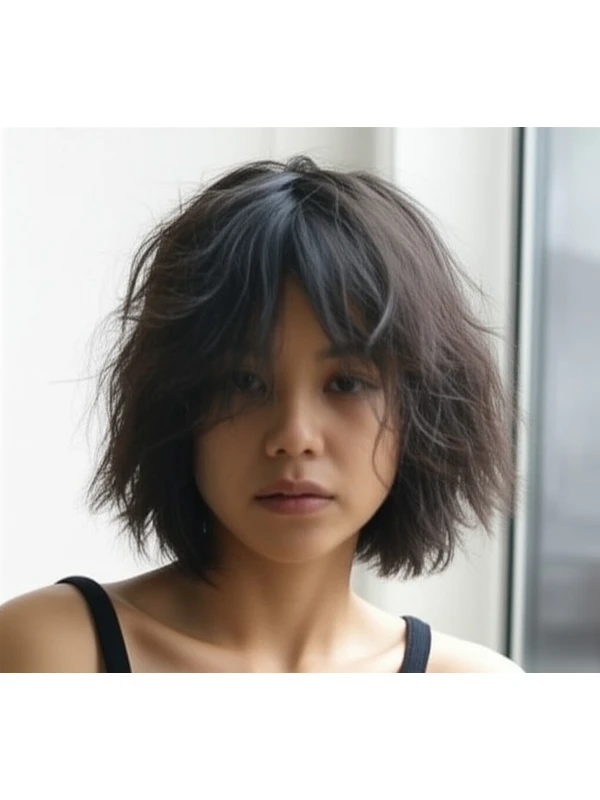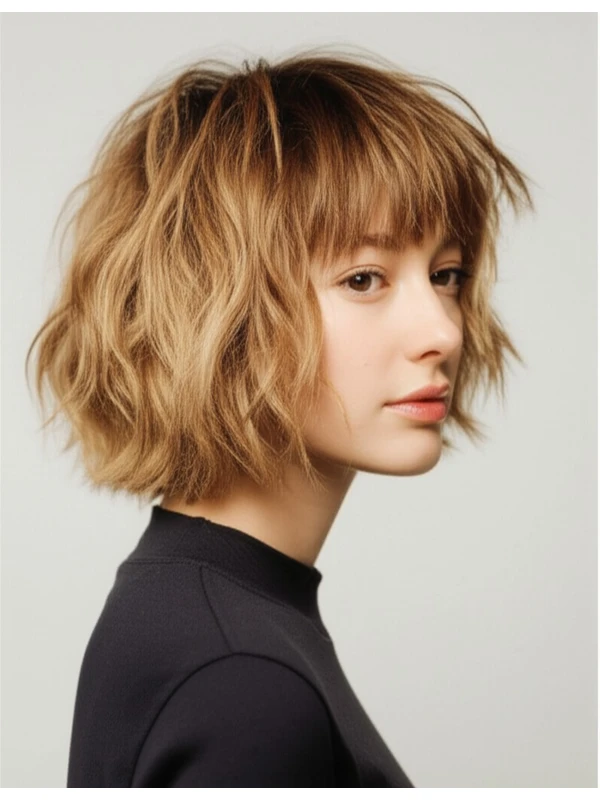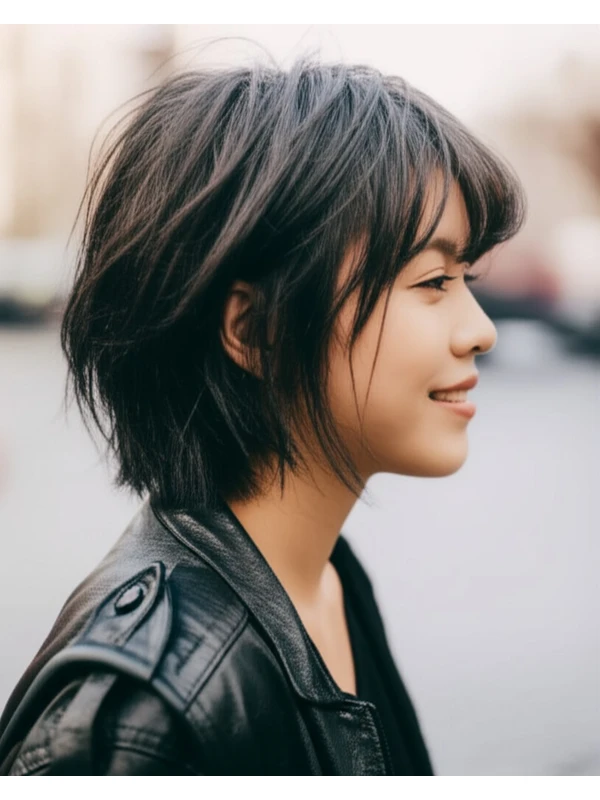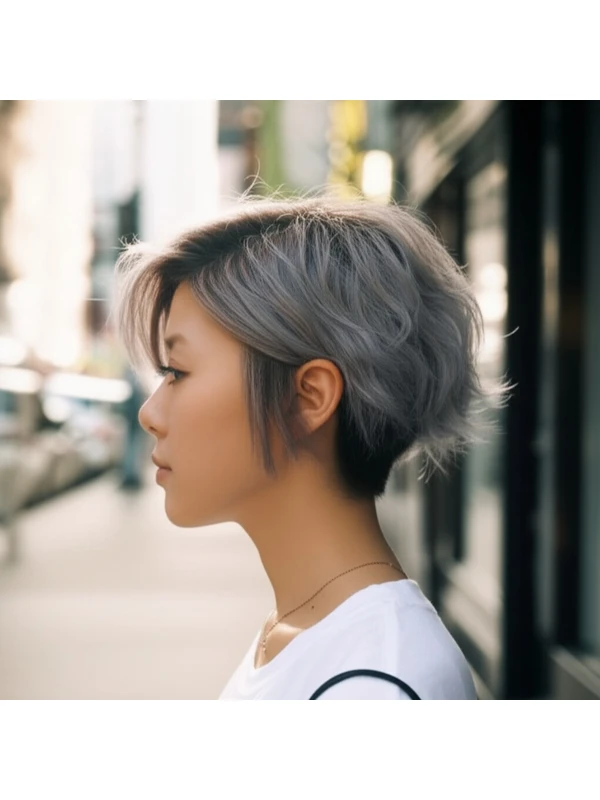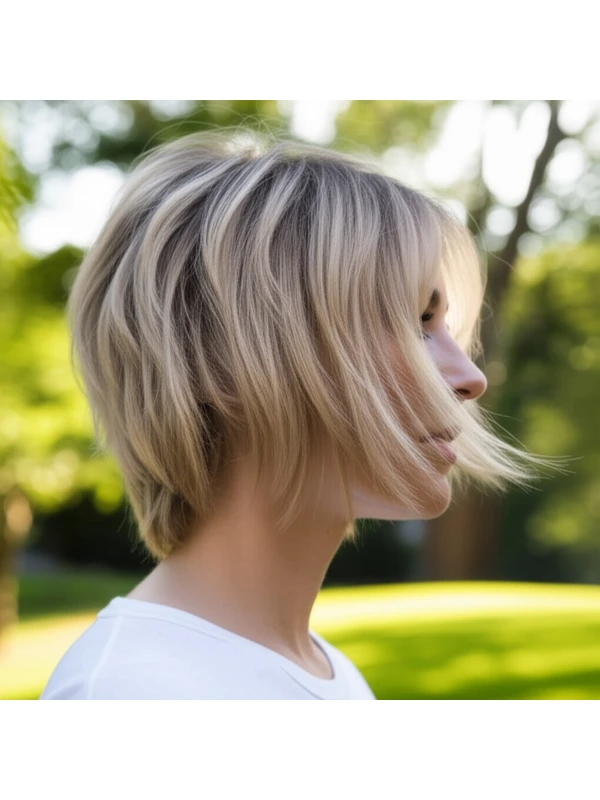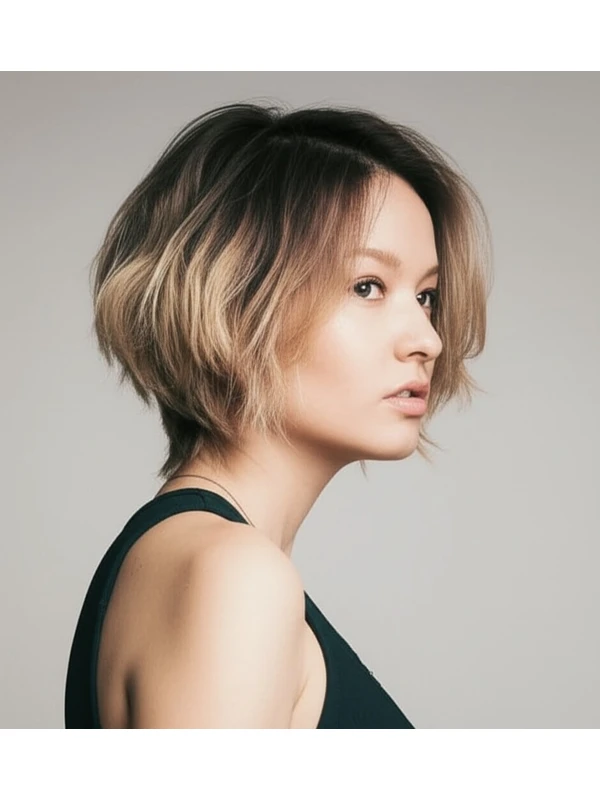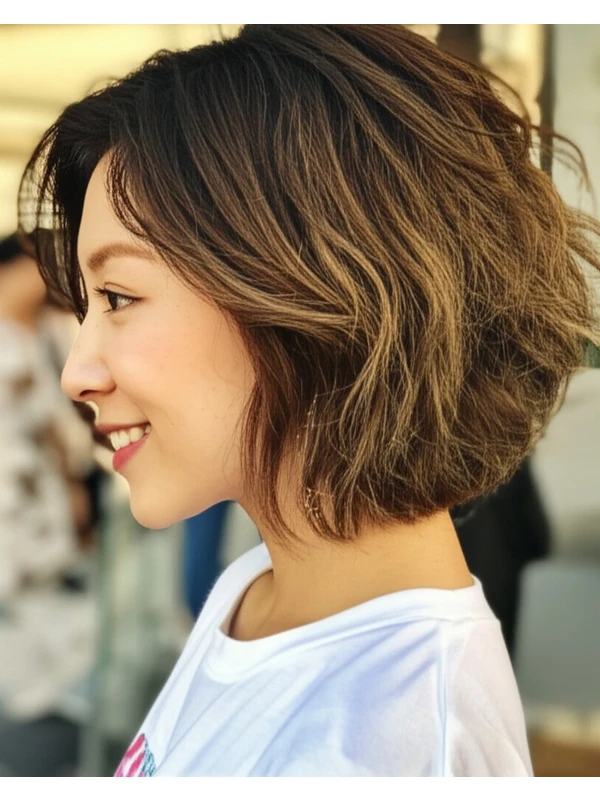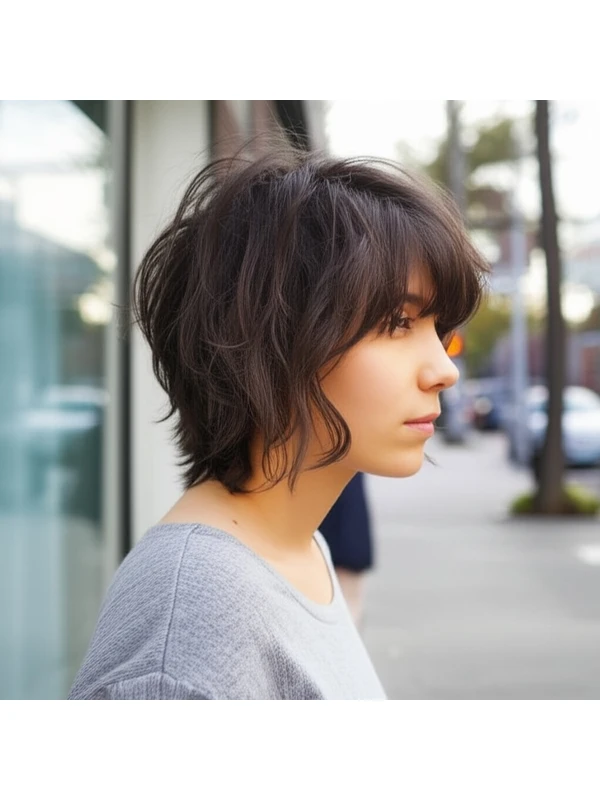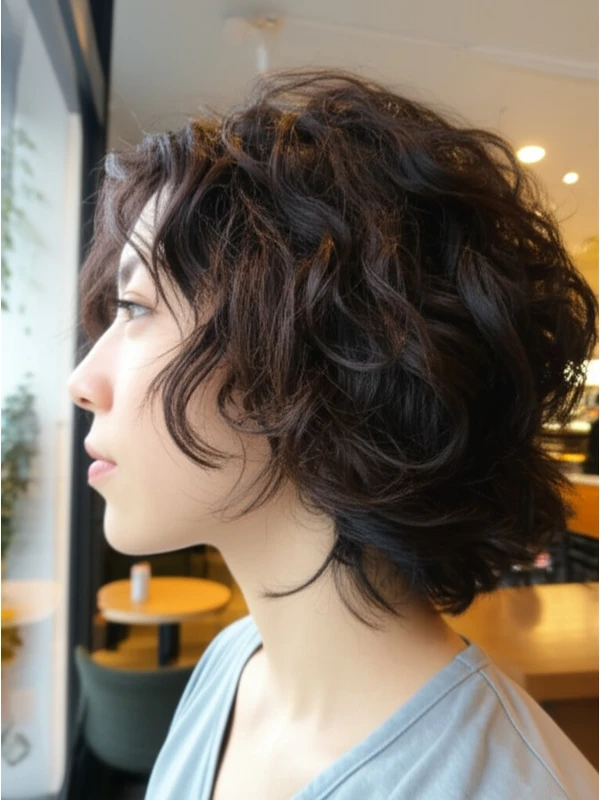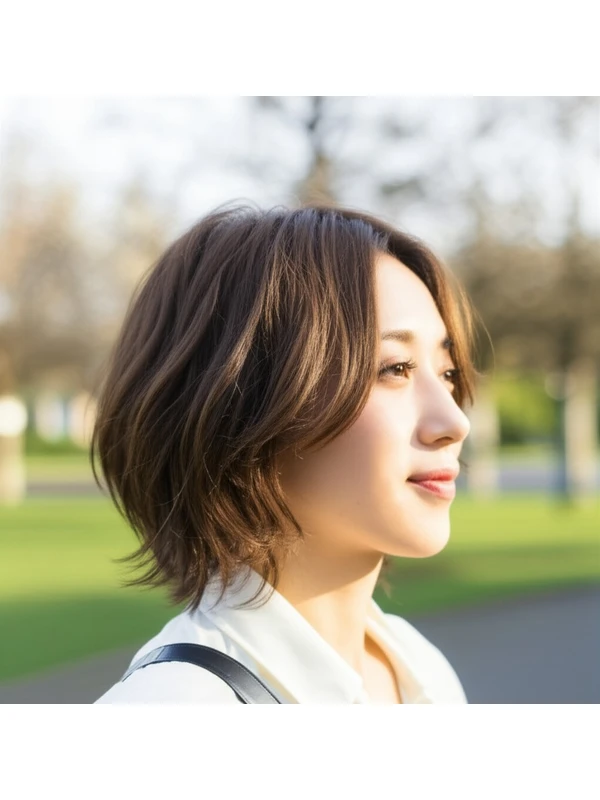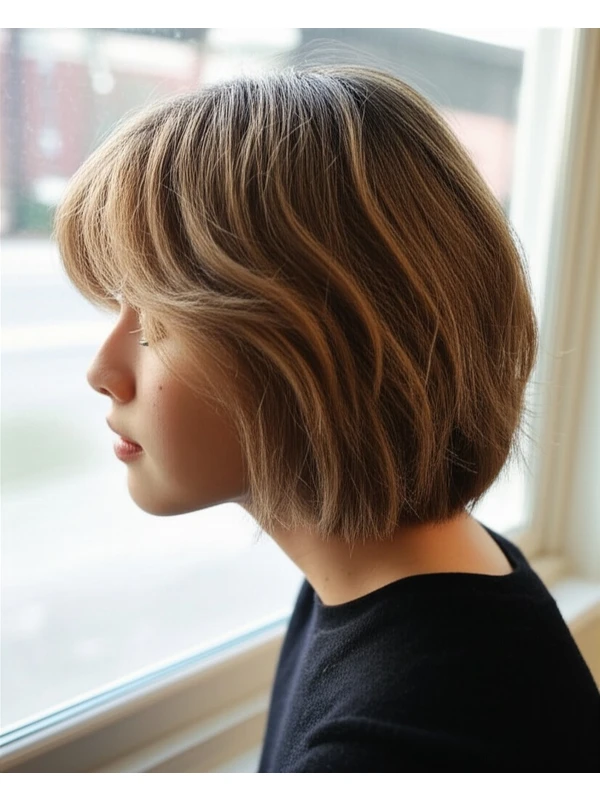#The Wolf Cut: A Guide to This Wildly Popular Style
The wolf cut is the haircut everyone's talking about – a blend of the shaggy mullet and the choppy layers we loved in the 70s, but with a modern, softer edge. It’s all about volume at the crown, shorter layers around your face, and a more relaxed feel than some other layered styles. Ready to embrace your inner wolf? Let's break down everything you need to know!
#1) Background & Definition: What is a Wolf Cut?
The wolf cut isn't just a haircut; it’s an attitude. It originated on TikTok, quickly gaining popularity for its effortless cool and customizable nature. Think of it as a layered haircut with a lot of personality.
Key Features:
- Heavy Layers: The defining characteristic – lots of short layers around the face that gradually blend into longer lengths at the back.
- Volume on Top: The crown gets extra lift and texture, creating a noticeable "mushroom" effect (in a good way!).
- Choppy Ends: Deliberately imperfect ends add to the undone vibe.
- Face-Framing Pieces: Shorter layers that highlight your features.
Typical Length Ranges: Wolf cuts generally work best between shoulder length and collarbone length, but can be adapted for longer hair too (though the effect will be more subtle).
Alternative Names: You might also hear it called a "wolf mullet," a “shag-meets-mullet,” or simply a “layered shag.”
#2) Face Shape Fit: Finding Your Perfect Wolf Cut
The beauty of the wolf cut is its adaptability. However, understanding how it interacts with your face shape will help you and your stylist achieve the best result.
- Oval: This is the ideal face shape for a wolf cut! The layers naturally complement oval faces, highlighting cheekbones and jawlines without adding bulk where it's not needed. A full fringe or curtain bangs work beautifully.
- Round: A wolf cut can soften roundness by adding height at the crown and drawing attention upwards. Avoid too much volume at the cheeks; ask for layers that start higher up on your face to elongate. Side-swept bangs are a great choice.
- Square: The soft, choppy layers of a wolf cut help to soften angular features. A longer fringe or curtain bangs can further diffuse harsh lines.
- Heart: A wolf cut with shorter, wispy layers around the face will balance out a wider forehead and pointed chin. Avoid too much volume at the crown if you want to avoid making your forehead appear even wider. Consider side-swept bangs or soft fringe.
- Diamond: Similar to heart shapes, diamond faces benefit from softening angles with wolf cut's layers. A longer fringe can help balance a narrower chin.
- Oblong (Long): A wolf cut adds width and dimension to oblong faces. Keep the volume balanced throughout the head – too much on top will only elongate your face further. Avoid very short, blunt bangs that emphasize length. Curtain bangs are ideal.
#3) Body Proportions & Height Guidance: Tailoring the Cut
Your body shape and height also influence how a wolf cut looks!
- Petite: A shorter wolf cut (collarbone length or slightly above) will prevent you from being overwhelmed by too much hair.
- Average Height: Most lengths work well, allowing for flexibility in styling.
- Tall: Longer versions of the wolf cut can balance your height and create a more proportionate look.
- Narrow Shoulders: The volume at the crown will visually broaden shoulders.
- Broad Shoulders: Be mindful of layering around the shoulder area to avoid adding extra width. Layers that fall away from the face are best.
- Short Neck: Avoid excessive volume right at the hairline, as it can accentuate a shorter neck. A softer fringe or side-swept bangs will be more flattering than a blunt, heavy one.
- Long Neck: The added volume of the wolf cut helps to fill out and shorten the appearance of a longer neck.
#4) Works Best With Hair Types & Densities: Finding Your Wolf Cut Sweet Spot
The wolf cut is surprisingly versatile but thrives with certain hair types.
- Straight Hair: Creates that iconic, defined layered look. Styling products are key to enhancing texture and volume.
- Wavy Hair: The layers will enhance natural waves and create a more textured feel. Air-drying often works well!
- Curly/Coily Hair: Can be adapted for curls, but communication with your stylist is crucial. Shrinkage needs to be factored in (more on that below).
- Fine Hair: The layers add the illusion of volume and thickness. Texturizing products are essential.
- Medium/Thick Hair: This cut shines! Allows for maximum volume and definition.
- Density Tips: If you have very dense hair, your stylist may need to remove more weight to prevent the cut from looking too bulky.
Shrinkage Alert (Curly & Coily): Curls and coils can shrink significantly when dry. Your stylist needs to account for this when cutting – what looks like a certain length on wet hair will be much shorter once it's dried!
#5) Styling Variations: From Casual Cool to Evening Glam
The wolf cut is your blank canvas! Here’s how to change up the look:
- Sleek vs. Textured: Sleek styles require smoothing products and a round brush. For texture, embrace air-drying or use texturizing sprays.
- Middle vs. Side Part: A middle part enhances symmetry; a side part adds softness and volume.
- Fringe Variations: Blunt bangs, wispy fringe, curtain bangs – all work!
- Occasion Styling: A spritz of hairspray for the office, some beachy waves for summer, or a sleek blowout with defined layers for an evening event.
#6) Maintenance: Keeping Your Wolf Cut Wild
- Trim Cadence: Every 6-8 weeks to maintain shape and prevent it from looking overgrown.
- At-Home Routine: Gentle shampoo & conditioner, leave-in conditioner (especially important for curly/coily hair), occasional deep conditioning mask.
- Heat vs Air Dry: Air drying is ideal for embracing the natural texture. If using heat, use a protectant spray!
- Product Checklist: Shampoo, Conditioner, Leave-In Conditioner, Texturizing Spray (for volume and definition), Hairspray (for hold).
- Estimated Daily Styling Time: 5-20 minutes depending on your hair type and desired style.
#7) Grow-Out Roadmap: The Evolution of the Wolf Cut
- Months 1-3: The layers are most defined, creating a dramatic look.
- Months 3-6: Layers start to blend together as length grows. Maintain shape with regular trims. Consider adding more face-framing pieces if needed.
- Beyond 6 Months: The cut can transition into a longer shag or layered style.
#8) Color Pairings: Enhancing the Dimension
- Cool Undertones (ash blonde, cool brown): Enhance the icy, edgy feel of the wolf cut.
- Warm Undertones (honey blonde, copper): Create a sun-kissed, bohemian vibe.
- Low-Commitment Options: Balayage or highlights can add dimension without a drastic color change. Root smudging softens harsh lines.
#9) Season & Occasion Guide: Styling for Every Moment
- Spring/Summer: Embrace air-dried texture and beachy waves. Lighter, brighter colors work well.
- Fall/Winter: Add warmth with richer tones and more defined layers. Sleek styles are perfect for formal events.
- Work: A slightly tamed version – less volume at the crown, a neat fringe (if you have one).
- Weddings/Parties: Playful waves or a sleek blowout - let your personality shine!
#10) Cost & Time: What to Expect
- Salon Time: Typically 1.5 – 2.5 hours, depending on hair length and desired complexity.
- Estimated Price Range: Moderate to High (relative terms—expect a slightly higher price than a basic trim).
#11) Pros & Cons: The Trade-Offs
Pros:
- Versatile and customizable
- Adds volume and dimension
- Effortlessly cool vibe
- Works with many face shapes
Cons:
- Requires regular trims to maintain shape
- Can be high maintenance for certain hair types (especially curly/coily)
- May not suit very short necks
#12) Salon Consultation Script: Your Checklist
To ensure your stylist understands your vision, bring these questions and requests:
- "I'm interested in a wolf cut. Can you show me some examples of different variations?"
- “What length would be most flattering for my face shape?”
- "How can we adapt the style to work with my hair texture/density?"
- "Can we discuss fringe options and which one would suit my features best?"
- "I'm concerned about [specific issue – e.g., volume at the crown, neck length]. How can we address that?”
#FAQs: Your Burning Wolf Cut Questions
- Is a wolf cut hard to style? It depends! While it can be styled effortlessly, achieving certain looks (like a sleek blowout) requires more effort and skill.
- Can I get a wolf cut with fine hair? Absolutely! The layers will add the illusion of volume.
- What if my curls/coils shrink too much? Communicate this to your stylist before they start cutting! They can adjust the length accordingly.
- How long does it take for a wolf cut to grow out? It depends on how dramatic you want the change, but expect 6-12 months for significant growth.
- Can I do this myself at home? While possible, it’s best left to professionals – especially if you're unsure about layering techniques!
- Will a wolf cut make my face look wider? It can if the layers are too heavy around the cheeks. Discuss placement with your stylist.
The wolf cut is more than just a hairstyle; it’s an expression of individuality and confidence. With careful planning and communication, you can rock this trend-setting style!
